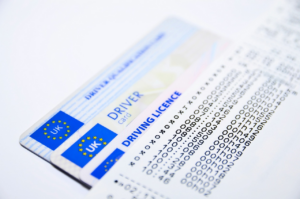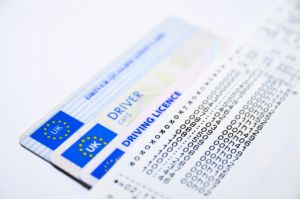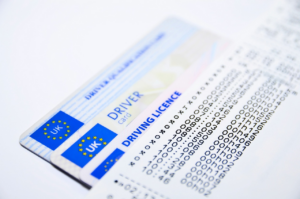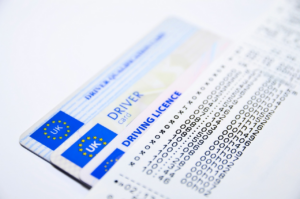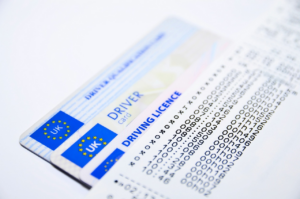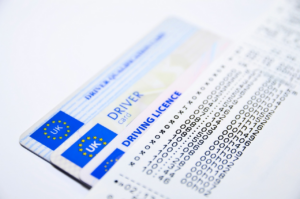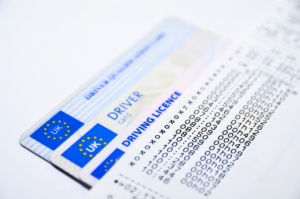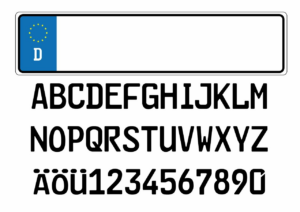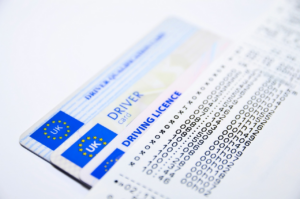Are you planning a trip to Canada and wondering if you can legally drive with your foreign driver’s license? The answer is yes, but with a few conditions. Canada has strict driving laws, and it’s important to understand them before getting behind the wheel. In this article, we’ll explain the rules for driving in Canada with a foreign driver’s license and provide tips for safe driving in this beautiful country.
First, it’s important to note that Canada has a two-tiered driving system. Each province and territory has its own set of driving laws and regulations. So, while you may be able to drive with your foreign driver’s license in one province, it may not be valid in another. Understanding these differences is key to safely and legally driving in Canada.
Let’s dive into the details.
Overview of Driving Laws in Canada
Get the lowdown on Canadian driving laws and find out if your international permit is valid.
When it comes to driving in Canada, it’s important to understand that each province and territory has its own set of laws and regulations. While some may have similar laws, there may be slight differences you need to be aware of depending on where you plan to drive.
If you’re visiting Canada, you may be wondering if you can drive with your foreign license. The answer is yes, but only for a limited amount of time. Each province and territory has its own rules on how long you can drive with an international permit, but generally it’s around 90 days.
After that, you’ll need to either obtain a Canadian driver’s license or stop driving. It’s important to note that if you plan to stay in Canada for an extended period of time, it’s recommended that you obtain a Canadian driver’s license as soon as possible to avoid any legal issues.
Understanding Your Foreign Driver’s License
If you plan on driving in Canada with a foreign driver’s license, it’s important to understand its validity and translation requirements. Your license must be valid and in good standing. You may need an official translation if it’s not in English or French. Additionally, you may need to obtain an International Driving Permit to drive in Canada depending on your country of origin.
Note: I’ve used contractions as requested.
Validity and Translation Requirements
By understanding the validity and translation requirements for your license, you can confidently navigate the process of driving in Canada with ease. Here are some key points to keep in mind when considering your foreign driver’s license:
-
Validity: In most cases, your foreign driver’s license will be valid in Canada for a limited period of time (usually around 3 months). After this time, you’ll need to obtain a Canadian driver’s license in order to continue driving legally.
-
Translation: If your license isn’t in English or French, you may need to obtain an official translation of your license in order to drive in Canada. This can be done through a translation service or by contacting your embassy or consulate.
-
Insurance: It’s important to make sure that your insurance coverage is valid in Canada before driving. Some foreign insurance policies may not provide coverage in Canada, so it’s important to check with your provider beforehand.
-
Additional requirements: Depending on the province or territory you’re driving in, there may be additional requirements for driving with a foreign license. For example, some provinces may require you to carry an International Driving Permit (IDP) along with your foreign license.
By keeping these points in mind and doing some research beforehand, you can ensure that you’re meeting all the necessary requirements for driving in Canada with your foreign license.
Remember to always drive safely and follow the rules of the road, no matter where you’re driving.
International Driving Permits
Now, let’s talk about what you’ll need to get an International Driving Permit for your upcoming road trip abroad. An International Driving Permit (IDP) is a document that allows you to drive in Canada with your foreign driver’s license. It serves as a translation of your original driver’s license, and is recognized in over 150 countries worldwide.
The IDP is valid for one year and can be obtained from your country’s national automobile association or driving authority. To apply for an IDP, you’ll need to provide proof of identity, residency, and a valid driver’s license. The process is usually straightforward and can be completed within a few days.
It’s important to note that an IDP is not a replacement for your driver’s license, but rather a supplement to it. You’ll still need to carry your original driver’s license with you while driving in Canada. Additionally, not all countries require an IDP for driving, so it’s best to check with the Canadian government’s website or the embassy or consulate of the country you plan to visit to confirm their driving requirements.
With an IDP in hand, you can confidently explore the beautiful landscapes and bustling cities of Canada without worrying about language barriers or driving restrictions.
Temporary Visitors to Canada
If you’re planning on staying in Canada temporarily and driving with a foreign license, it’s important to know the length of time you’re allowed to stay.
As a temporary visitor, you’re typically allowed to drive with your foreign license for up to six months. However, it’s important to note that each province may have different regulations.
Additionally, it’s important to make sure you have the proper insurance coverage before driving in Canada to avoid any legal or financial issues.
Length of Stay and Driving Options
The length of your stay in Canada determines your driving options. If you’re a temporary visitor with a stay of less than 3 months, you can drive with your foreign driving license without any issues.
However, if you plan on staying longer than 3 months, you’ll need to obtain a Canadian driver’s license. To obtain a Canadian driver’s license, you’ll need to pass a knowledge test, a vision test, and a road test.
The process may vary depending on the province or territory you’re in, so it’s best to check with the local licensing office for specific requirements. Keep in mind that if you’re caught driving without a valid driver’s license, you may face fines and even have your vehicle impounded.
So, make sure to get your Canadian driver’s license as soon as possible if you plan on staying in Canada for an extended period of time.
Insurance Requirements
Make sure to have proper insurance coverage before hitting the road in Canada, as it’s a crucial requirement that you shouldn’t overlook.
While it’s legal to drive in Canada with a foreign driving license, you need to have adequate insurance coverage to protect yourself, your passengers, and other motorists in the event of an accident.
Canada has mandatory insurance requirements that all drivers must meet, regardless of their driving license’s country of origin. These requirements include third-party liability coverage, which covers damages or injuries you may cause to other drivers, passengers, or property.
You can purchase insurance coverage from your home country or opt for a Canadian insurance policy, which may be more appropriate if you plan to stay for an extended period. Ensure that your insurance policy meets the minimum requirements set by the province or territory where you plan to drive.
Permanent Residents and Newcomers
As a permanent resident or newcomer to Canada, you may be wondering about the process of exchanging and recognizing your foreign driving license. It’s important to note that each province and territory has its own rules and regulations regarding this matter.
In some cases, you may need to take a driving test or undergo training before being able to obtain a Canadian driver’s license.
Exchange and Recognition of Foreign Licenses
If you’re from another country, your driving permit might still be valid in Canada. However, this depends on the country you’re from and the province or territory you’re visiting. Canada has an agreement with some countries that allows visitors to use their foreign driving license for a limited time. This means that you don’t need to apply for a Canadian license if you’re just visiting for a short period of time.
Here are some things you should know about exchanging and recognizing foreign licenses in Canada:
-
The period of validity for your foreign license depends on the province or territory you’re visiting. For example, in Ontario, you can use your foreign license for up to 60 days. After that, you’ll need to apply for a Canadian license.
-
To exchange your foreign license for a Canadian one, you’ll need to provide proof of identity, residency, and driving experience. You may also need to take a knowledge test and a road test, depending on the province or territory you’re in.
-
Some countries have agreements with Canada that allow for easier exchange of licenses. For example, if you’re from France, you can exchange your license for a Canadian one without having to take a knowledge or road test. Check with your embassy or consulate in Canada to see if your country has a similar agreement.
Required Tests and Training
Ready to hit the road? Before you start driving in Canada, you need to know about the required tests and training.
Depending on the province or territory, you may need to take additional tests or training to obtain a Canadian driver’s license.
In some cases, you may need to take a written knowledge test, a road test, or a vision test to obtain your Canadian license.
Additionally, some provinces may require you to take a driver education course before you can take the road test.
It’s important to check with the licensing authority in the province or territory you’ll be driving in to ensure you have all the necessary documentation and training before hitting the road.
Driving in Different Provinces
Discovering the diverse driving laws between Canadian provinces can be an exciting challenge, especially when you’re accustomed to driving in only one location. It’s important to note that the rules and regulations for driving in each province can vary, and it’s essential to familiarize yourself with the specific laws before you hit the road.
Here are some key differences you can expect while driving in different provinces in Canada:
-
Speed limits: The speed limits can vary depending on the province and the type of road you’re driving on. In some provinces, the maximum speed limit on highways can be as high as 120 km/h, while in others, it can be as low as 100 km/h.
-
Right turns: In some provinces, you’re allowed to make a right turn on a red light after coming to a complete stop, while in others, you must wait for the green light.
-
Seat belts: The laws regarding seat belts can differ between provinces, with some requiring all passengers to wear a seat belt at all times, while others only require the driver and front-seat passengers to wear them.
-
Cell phone use: In some provinces, it’s illegal to use a handheld device while driving, while in others, it’s only prohibited for new drivers or in certain situations.
By understanding these differences, you can ensure your safety and avoid any potential fines or legal issues while driving in Canada.
In conclusion, driving in different provinces in Canada can be an exciting experience, but it’s crucial to be aware of the varying laws and regulations. By taking the time to familiarize yourself with the specific rules of the province you’re driving in, you can ensure a safe and enjoyable driving experience.
Renting a Car in Canada
When you’re planning to rent a car in Canada, there are a few things you need to keep in mind. Firstly, you’ll need to meet certain requirements to be able to rent a car, including age restrictions and holding a valid driver’s license.
Additionally, you’ll have to choose from various insurance options to ensure that you’re covered in case of any accidents or damage.
Requirements for Renting a Car
If you’re planning on renting a car in Canada, make sure to have the necessary documents with you to avoid any delays or complications during the rental process.
The main requirement is a valid driver’s license, which can be a foreign license as long as it’s in English or French. If your license isn’t in one of these languages, you’ll need to obtain an International Driving Permit (IDP) that translates your license.
Canada has different licensing requirements for each province, so check with the rental company to ensure that your license is valid in the province where you plan to drive.
In addition to a valid driver’s license, most rental companies require a major credit card in the renter’s name to cover the cost of the rental and any additional fees. Some companies may also require proof of insurance or the option to purchase insurance through the rental company.
It’s important to read the rental agreement carefully and ask any questions before signing it to understand the terms and conditions, as well as any additional fees that may apply.
With the necessary documents and information, you can enjoy a smooth rental experience and explore all that Canada has to offer.
Insurance Options
Looking to rent a car in Canada? Make sure you’re covered with the right insurance options, as discussed in the current section.
When renting a car, you have several insurance options to choose from. Here are three of the most common insurance options offered by rental car companies in Canada:
-
Collision Damage Waiver (CDW): This insurance option covers any damage to the rental car in case of an accident or collision. However, it doesn’t cover any damage to other vehicles or property.
-
Personal Accident Insurance (PAI): This insurance option covers any medical expenses or personal injuries sustained in an accident while driving the rental car.
-
Liability Insurance: This insurance option covers any damage or injury you cause to other people or their property while driving the rental car. It’s important to note that liability insurance is mandatory in Canada, and you may be held personally responsible for any damages or injury caused if you don’t have it.
Before renting a car in Canada, make sure to carefully review all insurance options offered by the rental car company and choose the ones that best suit your needs. Don’t assume that your personal car insurance policy or credit card coverage will provide adequate protection while driving a rental car in Canada.
By being informed and properly insured, you can enjoy your Canadian road trip with peace of mind.
Tips for Driving in Canada
Get ready to hit the road! These helpful tips will ensure a smooth and enjoyable driving experience in the Great White North.
First and foremost, be aware of the speed limits. They’re posted in kilometers per hour, not miles per hour like in the United States. Also, keep in mind that speed cameras are used in some provinces, so it’s important to follow the speed limits to avoid getting a ticket.
Another tip is to be cautious when driving in winter conditions, especially if you’re not used to driving in snow and ice. Make sure your vehicle is equipped with winter tires and keep an emergency kit in your car in case you get stuck or stranded.
Additionally, be aware of wildlife on the roads, especially in rural areas. Moose, deer, and other animals can suddenly appear on the road, so it’s important to be vigilant and watch for any signs warning of wildlife crossings.
By following these tips, you’ll be able to enjoy Canada’s beautiful scenery while driving safely and responsibly.
Conclusion and Additional Resources
Now that you have some tips for driving in Canada, you may be wondering if you can legally drive with your foreign driver’s license. The answer is yes, but only for a limited time.
Each province and territory has its own rules and regulations regarding how long you can drive with a foreign license, so it’s important to check with the local authorities before hitting the road.
In general, visitors to Canada can drive with their foreign license for up to three months. After that, they must obtain a Canadian driver’s license. Keep in mind that driving laws and road conditions may differ from what you’re used to in your home country, so it’s important to be aware of the rules and drive safely.
If you’re planning on staying in Canada for an extended period of time, it’s a good idea to start the process of obtaining a Canadian driver’s license as soon as possible. Additional resources on this topic can be found on the website of the Canadian Automobile Association or the government of Canada’s website.
Frequently Asked Questions
Are there any specific restrictions on the type of foreign driver’s license accepted in Canada?
To drive in Canada with a foreign driver’s license, there are specific restrictions that you should be aware of. Firstly, the license must be valid and not expired.
Secondly, the license must be in English or French, or you must have an official translation with you.
Lastly, the license must be from a country that has a reciprocal agreement with Canada. It’s important to note that each province or territory may have their own specific rules and regulations, so it’s best to check with the local government to ensure that you’re following all necessary requirements.
Can a foreign driver’s license be converted to a Canadian driver’s license?
If you’re a foreign driver visiting Canada, you may be wondering if you can convert your foreign driver’s license to a Canadian driver’s license. The answer is yes, in most cases.
However, the process can vary depending on the province or territory you’re in. Generally, you’ll need to provide proof of identity, residency, and driving experience. You may also need to pass a knowledge test and a road test.
It’s important to note that some countries have reciprocal agreements with Canada, which may make the process easier. It’s recommended that you check with the licensing authority in the province or territory you’ll be driving in for specific requirements and procedures.
How long can a temporary visitor drive in Canada with a foreign driver’s license?
As a temporary visitor in Canada, you can use your foreign driver’s license to operate a motor vehicle. However, it’s important to note that the duration of validity varies depending on the province you’re in.
For example, in Ontario, you can drive with your foreign license for up to 90 days from the date you arrived in Canada. After this period, you may need to get an International Driving Permit or apply for a Canadian driver’s license.
It’s always best to check with the specific province’s transportation department for their rules and regulations regarding foreign licenses. Remember, driving in Canada comes with responsibilities, so make sure you follow traffic laws and stay safe on the road.
Are there any age restrictions for driving in Canada with a foreign driver’s license?
When driving in Canada with a foreign driver’s license, there are certain restrictions to be aware of. Firstly, it’s important to note that the minimum driving age in Canada varies by province and territory, so it’s important to check the specific rules for the area you plan to drive in.
Additionally, some car rental companies may have their own age restrictions for renting a vehicle. It’s also worth noting that if you’re a temporary visitor, you may only be able to drive with your foreign license for a limited period of time, depending on the province or territory.
It’s always recommended to check with the local authorities and your car rental company for any specific rules or restrictions before driving in Canada with a foreign driver’s license.
What happens if a foreign driver gets a traffic violation or is involved in an accident while driving in Canada?
If you’re a foreign driver in Canada and you get a traffic violation or are involved in an accident, the consequences can vary depending on the severity of the offense.
For minor infractions such as a speeding ticket or parking violation, you may be required to pay a fine and points may be added to your license.
More serious offenses such as driving under the influence or reckless driving can result in immediate license suspension or even criminal charges.
It’s important to familiarize yourself with Canadian driving laws and regulations to avoid any potential legal issues.
Additionally, if you’re involved in an accident, it’s important to exchange insurance information and report the incident to the police.
Conclusion
So, can you drive in Canada with a foreign driving license? Yes, but it depends on your situation. If you’re a temporary visitor to Canada, you can use your foreign driver’s license for up to 6 months. However, if you’re a permanent resident or newcomer, you’ll need to obtain a Canadian driver’s license.
It’s important to understand the driving laws in Canada and the requirements for driving with a foreign license. If you plan on renting a car in Canada, you’ll need to provide a valid driver’s license. By following these guidelines and tips for driving in Canada, you can ensure a safe and enjoyable experience on the road.
For more information, check out the additional resources available on the Government of Canada website.







